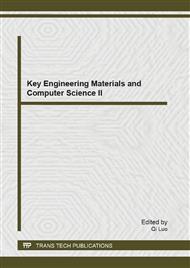p.428
p.433
p.439
p.444
p.449
p.455
p.460
p.466
p.475
Quantitative Models for Computing Distance and Directions: A Raster-Based Approach
Abstract:
Modeling Distance and Direction Relationships (DDR) is a key issue in spatial analysis and spatial reasoning. Various fields such as geology, hydrology, ecology, etc. apply DDR models to help digging out valuable patterns hidden in geoscientific dataset. This paper proposed two quantitative models through a raster-based approach for computing Euclidean distance and cardinal direction relationships, respectively, between a pair of spatial objects in a two-dimensional geographical space. The corresponding algorithms were designed and implemented. This new raster-based modeling can work universally on all types of spatial objects (point, line, polygon, or compound objects) and quantify DDR more accurately due to its sensitivity to object shapes. The usefulness of the modeling was demonstrated by various applications.
Info:
Periodical:
Pages:
449-454
Citation:
Online since:
July 2013
Authors:
Price:
Сopyright:
© 2013 Trans Tech Publications Ltd. All Rights Reserved
Share:
Citation:


